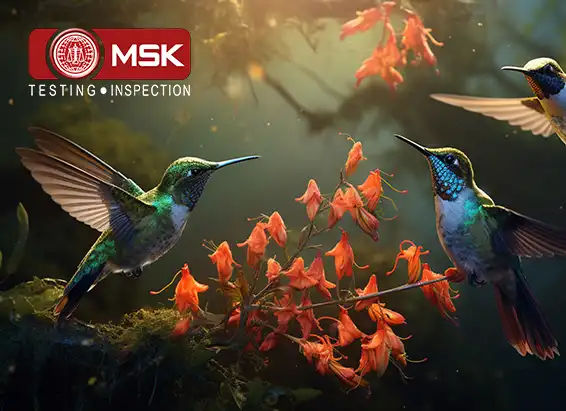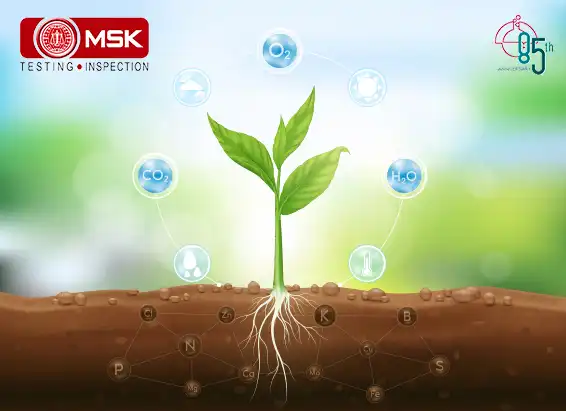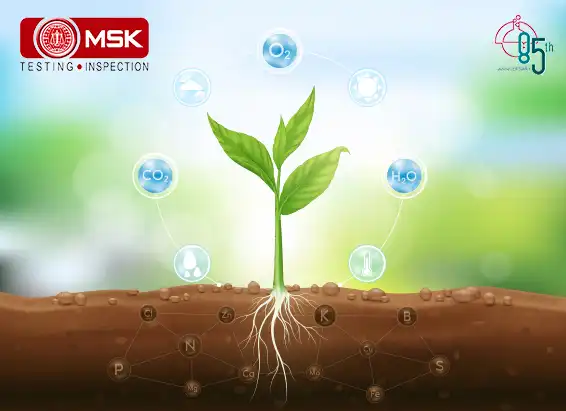
Introduction
β – Carotene the precursor of Vitamin A is a red-orange pigment present in plants and fruits like carrot, broccoli, lettuce, sweet potato, tomato, and winter squash and gives them their color. More intense the color the more beta carotene it has. This Carotenoid is added to many foods such as margarine, infant formula etc. Carotenoids belong to the most important group of natural pigments as they contribute too many diverse functions due to their high structural diversity. They also possess an immense amount of radical scavenging properties.
Beta carotene is a member of Carotenoids which are terpenoids and are synthesized biochemically from eight isoprene units and thus have 40 carbons.

This structure with 3 to 15 conjugated bonds allows them to have various biological functions. Additionally, due to their high unsaturation level they are susceptible to degradation reaction such as oxidation and hydrolysis which finally modifies their biological functions.
Ozone, widely used for sterilization in food industry as it has high oxidation power and high penetrability which increases microbial security for these foods. In addition, it does not leave behind any toxic residues unlike other types of sanitization agents. However, ozone has the capacity to react with the organic matter present in food, especially the unsaturated compounds, such as Carotenoid pigments, through well-known cycloaddition reaction resulting in carbonyl compounds.
The adverse effect has been revealed on two intervention trials with β – Carotene on two groups i.e. cigarette smokers and asbestos-exposed workers. The detrimental effects were observed related to oxidation products of beta carotene. Their generation of oxidation products confined in the polyene structure of beta carotene that is beneficial for radical scavenging, but is also prone to oxidation. The diversity of cleavage products depends on the dominant degradation mechanism and the bond cleavage would tend to occur either randomly or at defined position of the conjugated electron system.

The aim of this work was therefore to study the effect of ozone treatment in the degradation process of beta carotene.
Materials and methods
Test material: Raw vegetables (carrot, broccoli), infant formulae (Aptamil)
Reagents and standards: Beta carotene standard obtained from sigma Aldrich. All solvents used were of HPLC grade viz. Tetrahydrofuran (THF), Acetonitrile, methanol, 2-propanol. BHT and ammonium acetate used were of analytical grade.
Apparatus
Preparation of standard
10.0 mg of beta-carotene reference material was weighed with an accuracy of 0.01mg in a 10ml volumetric flask and made up to the volume with Tetrahydrofuran. The solution was sonicated for 30 seconds. Resulting stock solution is used for preparation of calibration curve, recovery study and ozone treatment.
Sample preparation
All extractions steps were performed in brown or aluminum-foil wrapped glassware and under dimmed-light conditions to avoid photo-oxidation of the Carotenoids.
Ozone treatment
Two ozone generators were used for ozone treatment viz. Witherpro-7 and Zeon 100.
Each of 50g of Infant formulae was treated with Zeon 100 at a fixed ozone concentration but with variation of time. Vegetables were treated with Witherpro-7. The concentration of oxygen was controlled to treat the samples at different concentration of ozone at different interval of time.

The standard solutions of fixed concentration (10ppm and 5ppm Beta carotene) were also ozone treated at a fixed ozone concentration with variation in time interval to study the degradation pattern in standard solution.
Results: Spectrophotometric analysis at 448nm

| Beta carotene (mg/kg) | Absorbance at 448nm | |
| 0.1 | 0.0245 | |
| 0.5 | 0.0763 | |
| 1 | 0.1629 | |
| 5 | 0.7232 | |
| 10 | 1.5936 |

| time (sec) | conc. (mg/kg) |
| 3 | 0.5615 |
| 5 | 0.5198 |
| 10 | 0.5019 |
| 15 | 0.0785 |
| 20 | 0.0370 |

| time (sec) | conc. (mg/kg) |
| 5 | 1.2339 |
| 10 | 0.5393 |
| 15 | 0.4925 |
| 20 | 0.4363 |
| 25 | 0.2809 |
HPLC system conditions
Column: Zorbax C-18 (250mm X 4.6mm X 5µ)
Flow rate: 0.6ml/min
Run time: 20 minutes
Wavelength maxima: 448nm
LC: Isocratic (A)
Mobile phase A: In 1L volumetric flask, 50mg butylated hydroxytoluene (BHT) was added in 20 ml 2-propanol and 0.2ml of triethylamine was added. To this was added 455ml acetonitrile and 450ml of methanol. Mixture was sonicated and volume was made up with methanol. Finally, the 1L mobile phase was filtered and sonicated for further use.


Results: HPLC
Infant formulae:
| Time of ozone exposure (minutes) | Beta carotene post exposure (mg/kg) | Dilution factor | Beta carotene post exposure (mg/kg) | |
| 0 min | 15.999 | 5 | 3.2 | |
| 3 min | 13.143 | 5 | 2.629 | |
| 4 min | 11.542 | 5 | 2.308 | |
| 5min | 10.673 | 5 | 2.135 |

Percentage degradation: (Initial conc. – Final conc.) X 100
Initial conc.
For infant formulae there is a limitation for ozone exposure. Hence Zeon 100 with the capacity of 500mg/hr. of ozone emission was used for a limited span of time. Percentage degradation for infant formulae was found to be 33%.
Degradation in Carrot
| Carrot | Conc. of ozone (mg/kg) | Beta carotene post exposure (mg/kg) | Dilution Factor | Beta carotene post exposure (mg/kg) | |
| 0 | 0 | 318.73 | 10 | 31.87 | |
| 1 | 0.12 | 282.88 | 10 | 28.29 | |
| 2 | 0.17 | 206.06 | 10 | 20.61 | |
| 3 | 0.2 | 156.31 | 10 | 15.63 | |
| 4 | 0.6 | 79.62 | 10 | 7.96 |

Degradation in Broccoli
| Broccoli | Conc. of ozone (mg/kg) | Beta carotene post exposure (mg/kg) | Dilution Factor | Beta carotene post exposure (mg/kg) | |
| 0 | 0 | 810.98 | 10 | 81.098 | |
| 1 | 0.12 | 706.37 | 10 | 70.637 | |
| 2 | 0.17 | 667.60 | 10 | 66.760 | |
| 3 | 0.2 | 213.77 | 10 | 21.377 | |
| 4 | 0.6 | 154.62 | 10 | 15.462 |

For vegetables ozonization was done in 1L water by using Wither pro-7 at 4 different concentrations of ozone for a fixed amount of time. The degradation varied from 75 to 80 percent.
Conclusion
The oxidation of beta carotene, under different concentration of ozone was found be varied between 33% in infant formulae to 80% in raw vegetables. The limitations of the food industry remain in the cost effectiveness of the process as ozone exposure has high cost. However, with the developing technology and awareness we can overcome the limitations.
Further potential of the work: Identification of degradation products.
Acknowledgments: I would be thanking the R&D team MSk and Team water house for their continuous support to complete this project.
Contributed by Shraboni Palley.


Chief Operation, FAMD, Tata Steel Limited..


Sr. General Manager,, Emirates Trading Agency L.L.C..


Mines Manager, Hindustan Zinc Limited, a Vedanta Company.


General Manager, Stevin Rock L.L.C..


Executive Vice President (Works),, DCW Limited.


AVP – Coal Quality & Sales Compliance Head,, PT Indo Tambangraya Megah Tbk (BANPU).


Laboratory Head, MMX.


Shipping Administrator, Mount Gibson Iron Limited.


Senior Director – Asia Pacific Iron Ore Sales,, Cliffs Natural Resources Pty Ltd..


Member, Compass Group (India) Pvt. Ltd.

Posted on December 16 2025 By Mitra S.K ADMIN
Read More
Posted on December 16 2025 By Mitra S.K ADMIN

Posted on December 16 2025 By Mitra S.K ADMIN

Posted on December 11 2025 By Mitra S.K ADMIN
![Estimating Cobalt by UV-Vis Spectroscopy: The [CoCl?]²? Acetone Method](https://mitrask.com/uploads/blogs/1764834098Estimating%20Cobalt.png)
Posted on December 04 2025 By Mitra S.K ADMIN
Posted on December 04 2025 By Mitra S.K ADMIN

Posted on November 12 2025 By Mitra S.K ADMIN

Posted on September 23 2025 By Mitra S.K ADMIN

Posted on August 01 2025 By Mitra S.K ADMIN

Posted on July 25 2025 By Mitra S.K ADMIN

Posted on July 18 2025 By Mitra S.K ADMIN

Posted on July 01 2025 By Mitra S.K ADMIN

Posted on May 22 2025 By Mitra S.K ADMIN

Posted on January 24 2025 By Mitra S.K ADMIN

Posted on January 24 2025 By Mitra S.K ADMIN

Posted on December 31 2024 By Mitra S.K ADMIN

Posted on December 31 2024 By Mitra S.K ADMIN

Posted on December 31 2024 By Mitra S.K ADMIN

Posted on December 31 2024 By Mitra S.K ADMIN

Posted on December 31 2024 By Mitra S.K ADMIN

Posted on December 03 2024 By Mitra S.K ADMIN

Posted on October 17 2024 By Mitra S.K ADMIN

Posted on October 04 2024 By Mitra S.K ADMIN

Posted on September 13 2024 By Mitra S.K ADMIN

Posted on August 27 2024 By Mitra S.K ADMIN

Posted on August 23 2024 By Mitra S.K ADMIN

Posted on June 27 2024 By Mitra S.K ADMIN

Posted on June 22 2024 By Mitra S.K ADMIN

Posted on June 15 2024 By Mitra S.K ADMIN

Posted on May 24 2024 By Mitra S.K ADMIN

Posted on May 17 2024 By Mitra S.K ADMIN

Posted on May 09 2024 By Mitra S.K ADMIN

Posted on April 20 2024 By Mitra S.K ADMIN

Posted on April 13 2024 By Mitra S.K ADMIN

Posted on April 30 2024 By Mitra S.K ADMIN

Posted on April 29 2024 By Mitra S.K ADMIN

Posted on December 30 2023 By Mitra S.K ADMIN

Posted on December 30 2023 By Mitra S.K ADMIN

Posted on December 30 2023 By Mitra S.K ADMIN

Posted on December 27 2023 By Mitra S.K ADMIN

Posted on December 27 2023 By Mitra S.K ADMIN

Posted on December 27 2023 By Mitra S.K ADMIN

Posted on December 27 2023 By Mitra S.K ADMIN

Posted on December 27 2023 By Mitra S.K ADMIN

Posted on December 27 2023 By Mitra S.K ADMIN

Posted on December 27 2023 By Mitra S.K ADMIN

Posted on December 26 2023 By Mitra S.K ADMIN

Posted on April 05 2022 By Mitra S.K ADMIN

Posted on April 06 2022 By Mitra S.K ADMIN

Posted on April 06 2022 By Mitra S.K ADMIN

Posted on April 06 2022 By Mitra S.K ADMIN

Posted on April 06 2022 By Mitra S.K ADMIN

Posted on April 06 2022 By Mitra S.K ADMIN

Posted on April 06 2022 By Mitra S.K ADMIN

Posted on April 06 2022 By Mitra S.K ADMIN

Posted on April 06 2022 By Mitra S.K ADMIN

Posted on April 06 2022 By Mitra S.K ADMIN

Posted on April 06 2022 By Mitra S.K ADMIN

Posted on April 06 2022 By Mitra S.K ADMIN

Posted on April 06 2022 By Mitra S.K ADMIN

Posted on November 28 2022 By Mitra S.K ADMIN

Posted on April 06 2022 By Mitra S.K ADMIN

Posted on April 06 2022 By Mitra S.K ADMIN

Posted on April 06 2022 By Mitra S.K ADMIN

Posted on November 28 2022 By Mitra S.K ADMIN

Posted on June 14 2022 By Mitra S.K ADMIN






